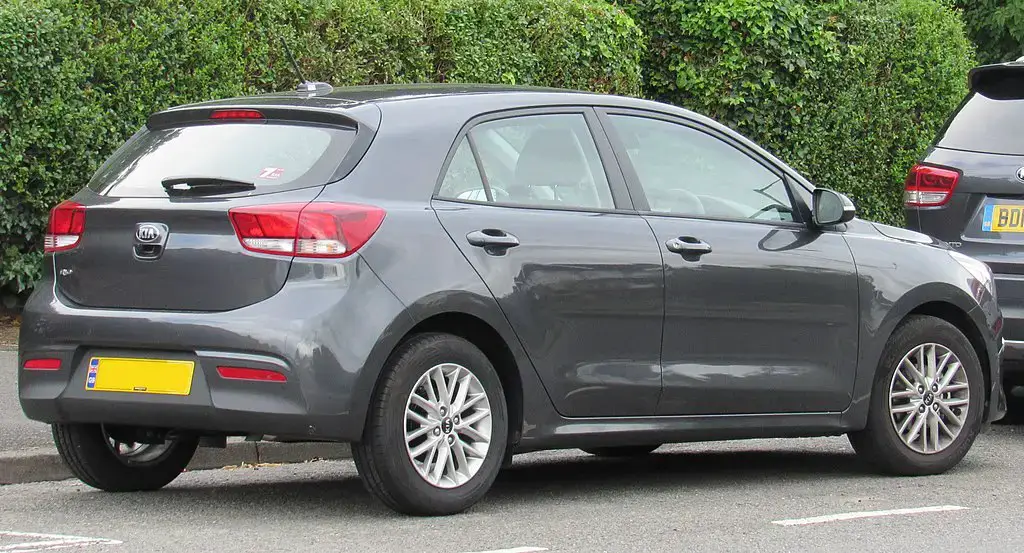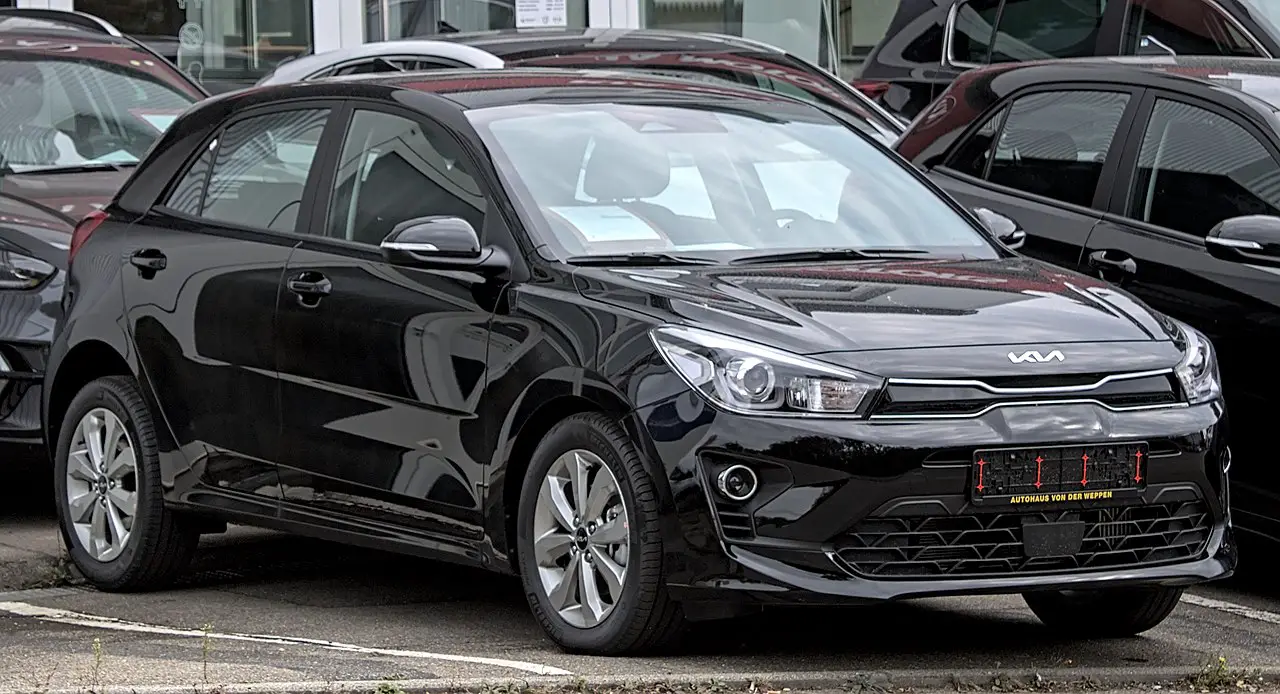Review : Kia Rio YB ( 2017 – 2024 )

Kia Rio YB, the best supermini you’ve never heard of. And it would be a shame not to hear about it, especially in these wacky automotive days.
We talked already about the Kia Rio quite abit, about how it humbly started out as another washing machine on wheels and how by the third generation it was one of the best superminies, along with its sister car the Hyundai i20. Time has moved on though and they had to come up with new ideas and here we have the Kia Rio YB, one of the most modern yet classic superminis on the market today. And yes, it’s one of my favorite cars.
Especially when you realise that the purchase price used to be somewhere around 10,000 pounds new (with various incentives and some discounts if you satisfied the sales agent somewhere in the parking lot behind the dealership) and it was a simple, reliable, good value for money car. Transportation and that’s it. A concept executed even better than the Dacia Sandero III. Actually no, the main rival was/is not the Sandero but the Suzuki Swift.
How come?
Both come with the bare minimum equipment for the city life. We have rear drum brakes, we have air conditioning with water taps for buttons and dials, we have a display that only Dr. Perry Cox can read and understand, we also have natutally aspirated engines and we have cars purposely built for the city but thoroughly below average everywhere else. So the question begs to be asked – what is the difference between them?
Honestly, it’s like you’re asking me to choose between Temptation Island and Love Island. Or Primator Double and Faxe.

Kia Rio YB Engines
Petrol
- 1.0 T-GDI G3LC of 100 and 120 horsepower – Abit of a late comer at a party from which almost everyone left. Unfortunately it came at a time when the car crisis hit us like a brick in the window or like a punch to the nads, and so it ended up costing so much that no one was interested.
- 1.2 G4LA Kappa of 84 horsepower – As we keep comparing the Kia Rio YB with the Suzuki Swift, here we have the piece of resistance. In 2023 it’s one of the last naturally aspirated engines on the market and it is also in 4 cylinder flavor. Sure, pedestrians will knock on your window to make you hurry, but if you’re terrified of technology and turbos and pixels and anything newer than 2005, then this is the engine for you.
- 1.4 G4LC Kappa of 100 horsepower – So it pretty much goes like this, the people from Kia decided that they want to sell an engine for the poo…budget conscious (1.2 MPI) and one for the rich (1.4 MPI), so that they can differentiate the trim levels. And, in the classic Kia tradition, the second engine is the only one that comes with an automatic gearbox. And in the present case, it is an really good 6 speed torque converter automatic gearbox. For the European market at least.
- 1.6 MPi and GDi Gamma G4LE of 122 and 136 horsepower – Because in non-EU countries, where the Euro pollution standards are rather advisory than mandatory, the older 1.6 Gamma was kept on sale. It depends on which part of the globe you are, it came in MPi or GDi flavor. Or which edge, if you also believe that the Earth is as flat as Sofia Boutella‘s abdomen. As with the other Kia family members which have this engine, you should take care of the carbon build-up on the GDi engine.
Diesel
1.4 CRDi U-Line D4FC of 77 and 90 horsepower – As discussed with the previous generation of Rio and i20, I don’t understand why you would put a diesel engine on a city car. Especially since this translates into issues with the particle filtre, flywheel, injectors, EGR, cut hands. Overall I would pass on it.

Kia Rio YB Reliability Issues
- It is not a problem for those who have more than 2 neurons fighting for the 3rd place, but for many people it is. Shock and horror, the Kia Rio YB is not a globe trotter, but a car built specifically for the city life. This translates into small engines, low on power but also low on issues. Yes, you won’t go 100 mph on the highway. Yes, the backroads and mountain roads will be as exciting as SBS TV. But that’s not what the Kia Rio YB is built for.
- Kia Rio YB fell victim to the car crisis and started to cost so much used that you wonder whether to buy an almost new 2021-2022 Rio or 2-3 2007 Touaregs – 1 to drive and 2 for parts. Of course, the maintenance costs are negligible in Rio, but the purchase cost curbs your enthusiasm more than the moment when she tells you that you only want to remain friends and she replies with “eeewww”
- The automatic gearbox is an reccuring sensitive point and here I am referring to the 7DCT 7 speed dual clutch gearbox. Just as VW had it’s share of problems in 2010 with it’s DSG, Kia and Hyundai are in the thick of it in 2020’s. It eats clutches just like Paul Wight in his WWE days, it breaks down completely, it needs software updates. If you insist on an automatic Rio, go for the 1.4 MPI petrol with the classic 6AT 6 speed torque converter.

Kia Rio YB Verdict
I know, I know, it costs as much as 2-3 Touaregs from 2007. Sure, it’s fairly expensive but these are the times we live in. And the basic versions really are basic. On the other hand, if you want a simple, chunky, Channel Tunnel sturdy, reliable and practical value for money city warrior, then it’s very hard to beat the Kia Rio YB. Maybe only with a Suzuki Swift or a Dacia Sandero. But otherwise it’s hard to beat.
Which engines do I recommend? For petrol power I will definatelly pick the 100 horsepower 1.4 MPI because it sits in the middle of the center, and for diesel anyway you only have a 1.4 CRDi of 90 horsepower, which is more meaningless on the Rio than me in life.
Similar Articles

Review : Toyota Verso AR20 ( 2009 – 2013 )

Review : Skoda CitiGO ( 2011 - 2020 )

Review : Seat Mii ( 2011 - 2020 )
Write an answer
- Review : Toyota Verso AR20 ( 2009 – 2013 ) 10 November 2025
- Review : Skoda CitiGO ( 2011 - 2020 ) 02 August 2025
- Review : Seat Mii ( 2011 - 2020 ) 02 August 2025
- December 2025
- November 2025
- October 2025
- August 2025
- July 2025
- April 2025
- March 2025
- February 2025
- January 2025
- December 2024
- November 2024
- October 2024
- August 2024
- July 2024
- June 2024
- May 2024
- April 2024
- March 2024
- February 2024
- January 2024
- December 2023
- November 2023
- October 2023
- September 2023
- August 2023
- July 2023
- June 2023
- May 2023
- April 2023
- March 2023
- February 2023
- January 2023
- December 2022
- November 2022
- October 2022
- September 2022
- August 2022
- July 2022
- June 2022
- May 2022
- March 2022
- April 2021
- January 2021
- December 2020
- November 2020
- October 2020
- September 2020
- August 2020
- July 2020
- March 2020